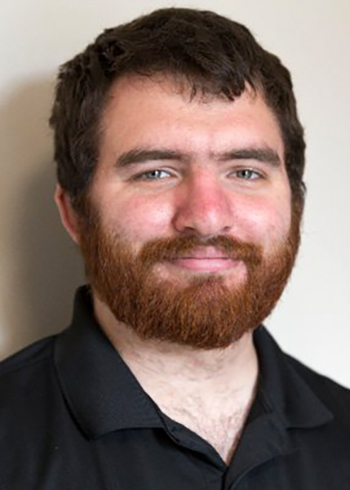
The Transformational Challenge Reactor (TCR) program at Oak Ridge National Laboratory (ORNL) aims to use modern manufacturing, computation, and materials to accelerate the design and deployment of advanced nuclear reactors and to reduce the cost of designing and building them.
One of the most notable aspects of the TCR program is the deployment of additive manufacturing technologies as part of the design process. Doctoral student Robby Kile, studying under NE Associate Professor Nick Brown, conducted research to verify the performance of the TCR designs under both normal operating conditions and accident scenarios. His findings were recently published in Nuclear Engineering and Design.
“This work demonstrates the application of sensitivity and uncertainty analysis tools as part of an integrated design process that has implications for hydride moderated microreactors,” said Ben Betzler, TCR Program director.
The nuclear reactors that are used today were designed and built decades ago using well-established manufacturing techniques. Those techniques presented constraints on how reactors could be designed; after all, we had to be able to build whatever reactors were designed.
The advent of modern manufacturing techniques like additive manufacturing, commonly known as 3D printing, has enabled nuclear engineers more flexibility in designing reactors with novel configurations, materials, and properties.
Kile’s research involved testing two different transient scenarios: a reactivity-initiated incident, and a pressurized loss of forced cooling incident. His findings demonstrated that even in extremely severe events, the TCR fuel is expected to remain intact, preventing the release of radioactive material.
“My work was to conduct sensitivity and uncertainty studies, meaning that I created thousands of models for transients, varying different design and incident parameters to understand which parameters had the greatest impact on reactor performance,” said Kile. “I then passed that information back to the TCR design team, who could use it to identify which areas of the design needed more focus for optimizing the final design.”
The design of the TCR was created to take advantage of these benefits of modern manufacturing capabilities. After a design was created, the TCR design team at ORNL and researchers at UT built computer models of the design and ran simulations of both normal operating conditions and transient scenarios to understand how a given design would perform.
Based on the results of the computer simulations, the TCR design team could identify areas for improvement and make changes to improve reactor performance by taking advantage of the unique capabilities of additive manufacturing.
Brown says that the nuclear industry will benefit by shifting to new technologies like additive manufacturing, saving potentially millions or billions of dollars by accelerating the costly and time consuming systems currently place for qualifying components.
“The nuclear industry stands to outcompete other energy sectors if it can adopt more efficiencies that don’t compromise safety,” said Brown. “By accelerating the process it takes to qualify components in a nuclear reactor core, we can save decades worth of time in bringing new reactors online for a fraction of the cost.”